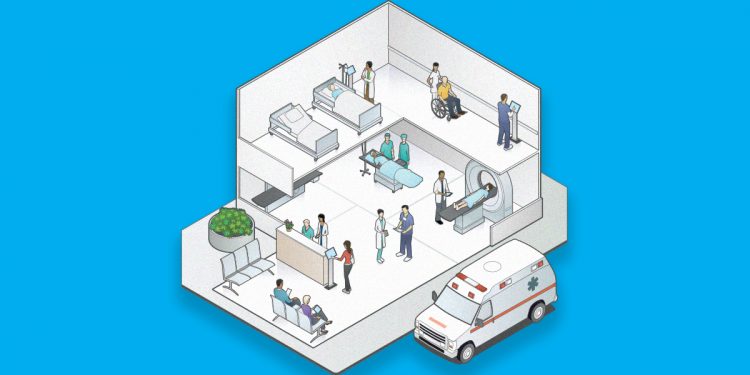Adages often fade! And what stands all the more true today is the age-old saying – “Health is wealth”! True to this saying, health issues have been on the rise – considering a scenario where you have not visited a hospital or clinic in the last 12 months would be really thin. It could be to visit a loved one, a regular health check, or probably because you are under the weather. And the other neglected truth is that our healthcare system has not changed much in the past thirty to forty years. With the advancements in technology, healthcare, as we know of, is about to transform, and in a big way!
With the world becoming “Smart”, healthcare cannot stay behind. The whole world is in a connected space and connected healthcare is the new thing today! With 60% of the healthcare organizations already implementing IoT in their connected healthcare solutions, it is only a matter of time before this conceptual healthcare model can deliver proactively are to all the patients.
So, what is connected to healthcare? Connected health is an umbrella term for wireless, the digital and telehealth concept of health management where devices are designed around the patient’s needs, data is shared, analyzed, and stored and proactive care is given to the patients. We are truly in the world of a digital revolution with the rise of smart hospitals. As a result, healthcare today uses IoT, smart systems, and sensor wearables to improve our overall health and fitness.
7 Benefits of Healthcare Space
So, what are the benefits of the so-called connected health solutions offered? Here are five such benefits:
Efficient treatment and diagnosis
Gone are the days when you have to wait for hours to see the doctor. The time between fixing an appointment and getting the prescribed medicine is all saved. The connected healthcare system does not have to be a physical place at all. With the smart sensors, everything is online – right from fixing an appointment to the consultation can happen anywhere from your home to your car or office. Diagnosis is made with wearables and treatment is made hassle free with online consultations, thus mitigating the risk of infections and dreading waiting hours! Increased connectivity further reduces the overall maintenance and operational costs, making it a much efficient choice.
Prevention is better than cure
With the increase in the usage of sensors and wearables, detecting illnesses and their prevention has become an easy task. Diet, hereditary conditions, environmental concerns, and lifestyle data are monitored to alert us about an underlying condition, that would lead to a healthy lifestyle change. Connected healthcare devices are all about a consistent change for a sustainable lifestyle. 71% of physicians expect such devices to have a positive impact on the user’s health by a simple message on their health daily.
Improved internal communication
Technological revolutions have led to a more efficient way of communication amongst healthcare officials. With virtual reality and easy connectivity, professionals can interact and spread technical know-how, thus offering better patient care. Sharing of information and 3D images is also much easier and results in quick brainstorming!
Elimination of human errors
With electronic data from smart devices replacing paper records, accurate diagnosis is available at the touch of a finger. This is critical to providing emergency care and the right treatment by any certified medical professional handling the patient. Data-driven decisions with automated technology ensure accuracy in diagnosis and help accomplish complicated surgeries with ease.
Advanced drug discovery
Big data transformation is used to analyze and accelerate the drug discovery process. Research on life science coupled with genomic data is enhancing the pharma industry to develop new drugs that will reach the public faster.
Healthcare is a vast ecosystem that ranges from personal healthcare, pharma industry to building robots, facilities, and so on. Here are specific ways in which IoT is helping the healthcare industry:
Cancer treatment
Activity trackers track a patient’s movement, fatigue levels, and so on. Wearing a tracker helps collect data to gain useful insights and chart a better treatment plan. Smart devices can analyze abnormal patterns and help prevent the disease.
Smart sleep
Sleep monitoring devices provide real-time data of your sleeping patterns. Automatic and accurate sleep time tracking ensures data collection and analysis of this data to arrive at the root cause of the problem. Connected health solutions with the help of IoT enables mattresses to automatically regulates the temperature for an optimum amount of rest.
Connected inhalers – These connected devices provide insights into a patient’s symptoms and treatment. A sensor connected to the inhaler can send out a message about the cause of asthma attacks.
While the benefits from smart hospitals are numerous, a key determinant of the success of connected devices in the network, especially in delicate cases as in hospitals. A high standard network, capable of handling data to 3D image files is mandatory. The architecture must include :
- Wireless access to connect people, sensors, and remote devices
- Cloud technology for critical machine communication
- Software to handle and support data transfer
- Data processing capability and analytics
The application of smart devices in healthcare is just the tip of the iceberg. With the continuous transformation of the healthcare system, there are better innovations in store. Connected healthcare has a promising future and will have a huge impact on the way the system works!
Follow Techdee for more!





